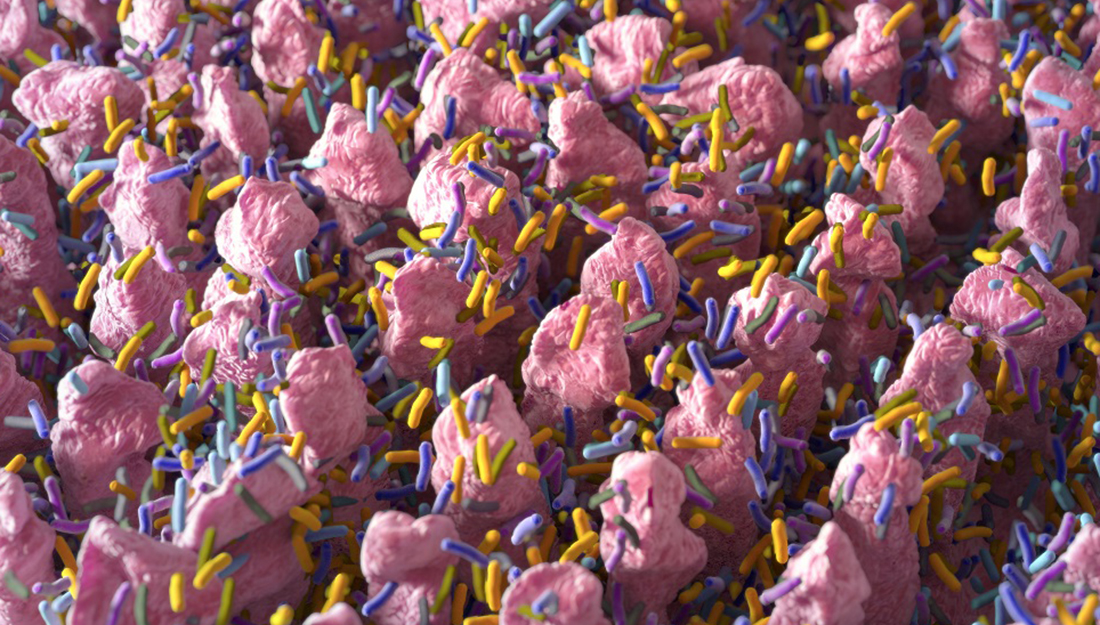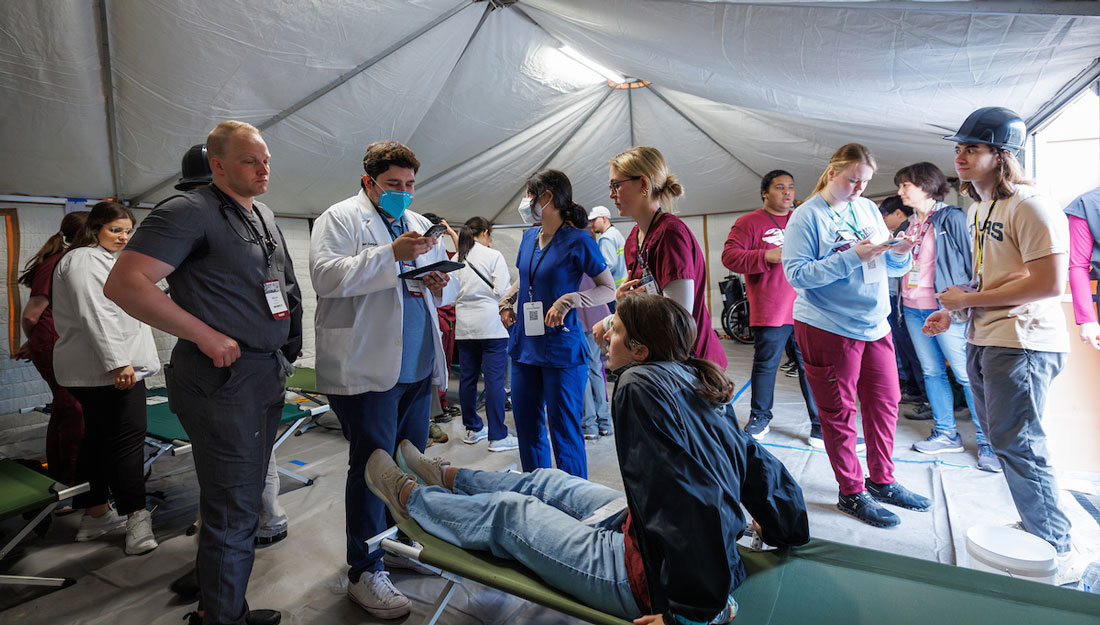- Christina Sumners
- Dentistry, Research, Show on VR homepage
Could your gut be triggering migraine headaches?
Texas A&M researchers investigate how gut bacteria may affect the brain

Many of us know that bacteria can cause disease and infections, but not all bacteria are bad. In fact, your gut is just one of many parts of the body full of ‘good’ bacteria. This population of bacteria—called the gut microbiota—works hard to keep your body healthy and functioning properly.
However, when the gut microbiota is disrupted from its normal routine, there can be side effects. Feng Tao, MD, PhD, associate professor at the Texas A&M College of Dentistry, is researching one of these potential side effects that might come as a surprise: migraine headaches.
Migraines are the third-most prevalent disease in the world, with more than 37 million people in the United States affected, said Tao, who earned his doctorate in neurobiology in China before completing his postdoctoral fellowship in neuroscience at Johns Hopkins University School of Medicine.
Although migraines can significantly affect quality of life, these types of headaches are often undiagnosed and undertreated, according to the Migraine Research Foundation (MRF). This disconnect is partially due to a lack of a clinically relevant animal model for migraine headaches. Without a clinically relevant model, it can be hard to learn about how to treat and prevent migraines.
To help bridge this knowledge gap, Tao and his collaborators at colleges across Texas A&M University are working to develop a patient-oriented animal model to investigate the role of gut microbiota in migraine headaches. This patient-oriented model is a novel approach to migraine research and includes colonizing gut microbiomes from human migraine sufferers in the gut of the model.
Although previous studies have already found an association between gastrointestinal disorders and migraines, the exact role of gut-brain crosstalk—the transfer of signals between the gut and the brain—in migraines is unknown. If his model is successful, Tao hopes that it will lead to a better understanding of gut-brain crosstalk and how a disruption in the gut microbiota can trigger a migraine.
Additionally, Tao’s model may also be able to shed light on why women are three times more likely than men to suffer from migraines, according to the MRF.
“This model could provide remarkable insight into the neurobiology of migraines and could make a significant impact on migraine research,” Tao said.
There are many causes of a disrupted gut microbiota, including a lack of probiotics in the diet. However, antibiotic use is the most common reason the gut microbiota becomes disrupted. Antibiotics can kill ‘bad’ bacteria in the body, which helps cure ailments, but they can also kill ‘good’ bacteria in the gut that keep you healthy.
“Antibiotics can cause disruption of the whole microbiota system,” Tao said. “This is bad because the normal microbiota is important for us to stay healthy.”
Not everyone develops migraine headaches from gut microbiota disruption. But for those who do, these migraine headaches may be significantly affecting their quality of life.
By working to develop a patient-oriented model for migraine research, Tao and his team of researchers could provide a solid foundation for future migraine research.
“I hope that this new model will promote translational research of migraines and lead to new and improved treatments for migraine-sufferers,” Tao said.
This project was chosen for the third round of the X-Grant Program awards. The program supports research that addresses important problems that significantly affect global society.
Article written by Callie Rainosek
Media contact: media@tamu.edu


